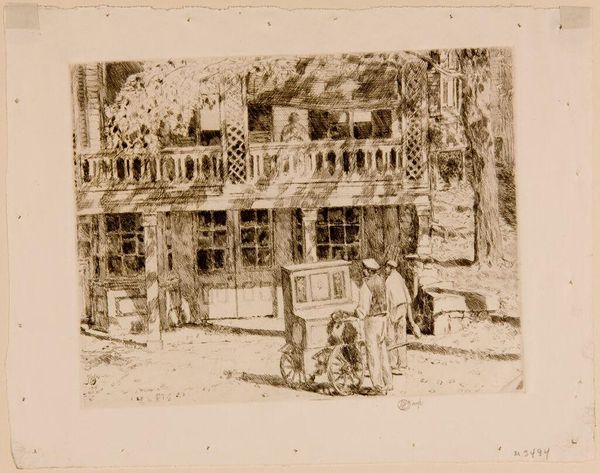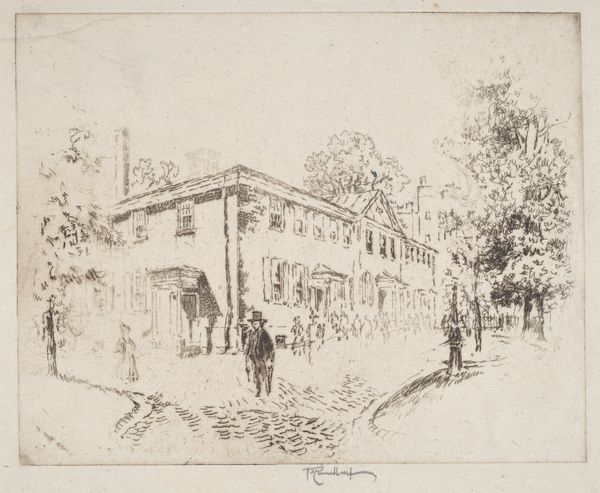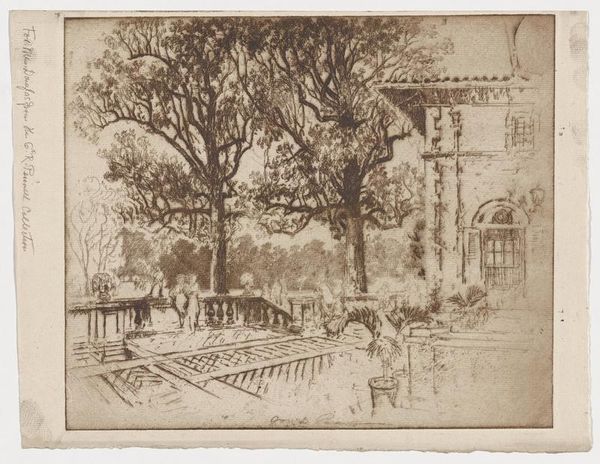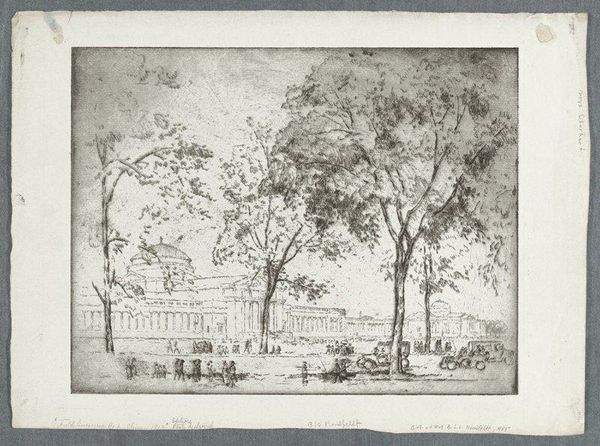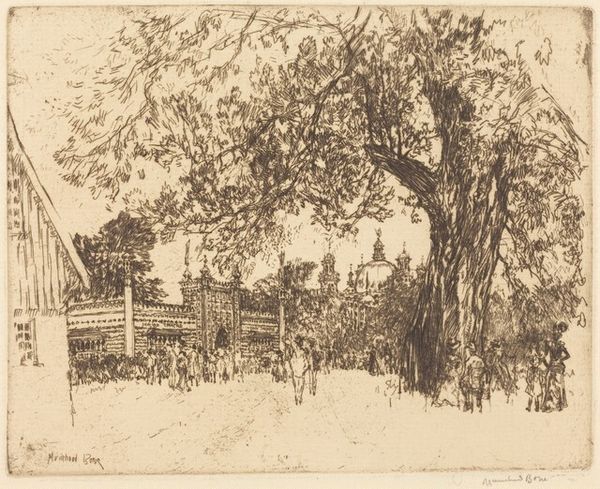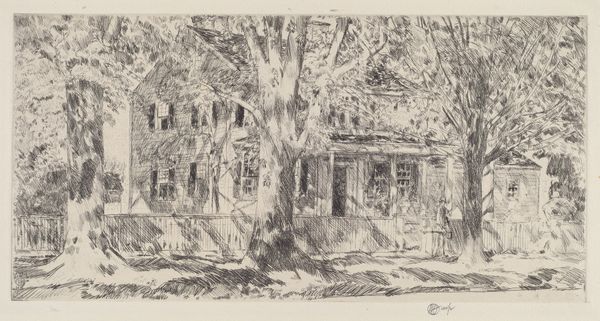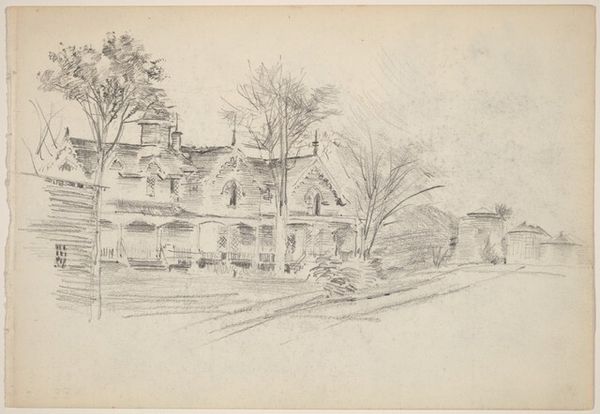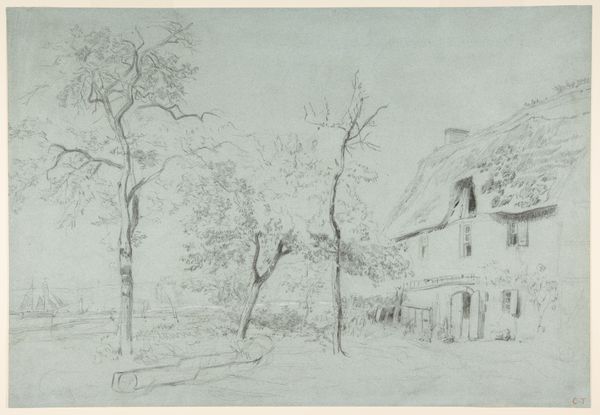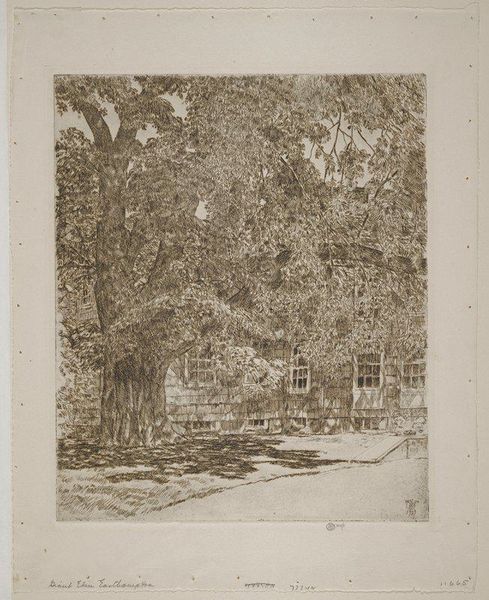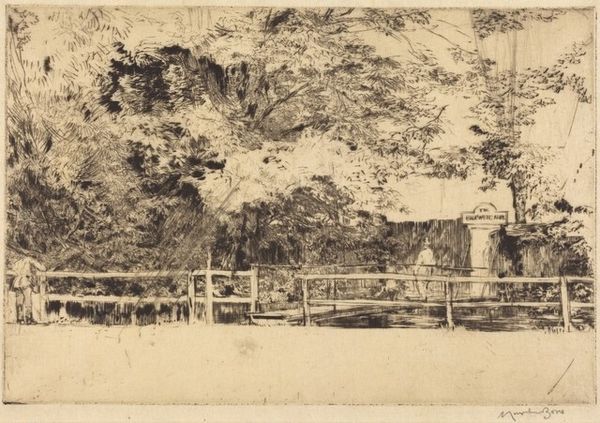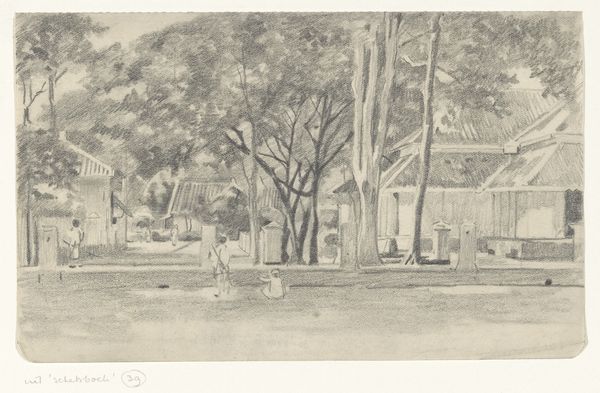
print, etching, engraving
# print
#
etching
#
landscape
#
cityscape
#
engraving
#
realism
Dimensions: 8 7/16 x 10 15/16 in. (21.43 x 27.78 cm) (plate)9 3/4 x 14 3/8 in. (24.77 x 36.51 cm) (sheet)
Copyright: No Copyright - United States
Editor: So, this etching by Joseph Pennell, dating back to the 19th century, is called "Under Cannon Street Station." The detail is amazing, almost photorealistic, and it makes me wonder about the rapid urbanization happening at the time. How do you interpret this work, particularly in the context of that era's social changes? Curator: That’s a keen observation. The etching's hyper-realistic detail is a loaded aesthetic choice. Think about what Pennell, as a privileged white artist, might be emphasizing – or obscuring – by depicting the city this way. What narratives are being validated or challenged in this carefully constructed image of modernity? Editor: Hmm, I guess I was just thinking about the industrial revolution and population growth, but I see your point. What societal issues do you think are most relevant here? The class divide, maybe? Curator: Precisely. Consider the implications of 'Under Cannon Street Station.' This artwork inadvertently highlights class disparities. Cannon Street Station symbolized progress and interconnectedness, yet the "under" space – often a realm of commerce and labor—might suggest the working class obscured by grand narratives. How can we analyze Pennell’s choice of perspective as a possible social commentary or, perhaps, a blind spot? Editor: That’s interesting; I hadn’t considered that Pennell's perspective could be interpreted as a commentary on visibility and privilege within the booming urban landscape. This piece makes you think. Curator: Yes, and that's exactly where the power of art lies: sparking critical engagement with the world around us and the forces that shape it. Art serves as both a document of history and a catalyst for future activism and social progression.
Comments
No comments
Be the first to comment and join the conversation on the ultimate creative platform.
